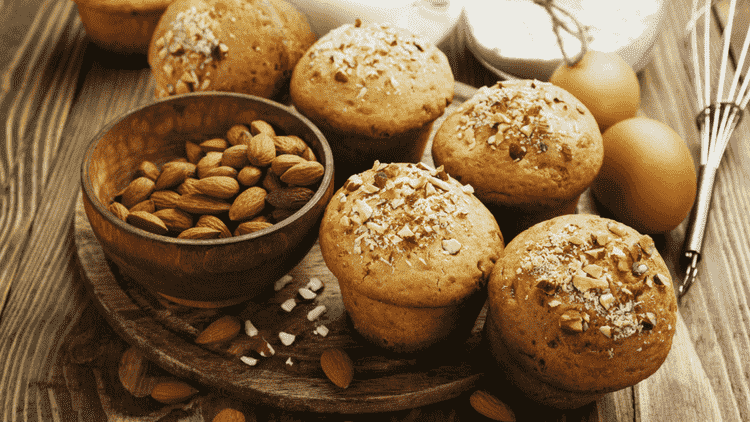The average woman doesn’t eat enough fiber on a daily basis, and it could be hindering her weight loss. Fiber is essential for satiety, blood sugar stabilization and so much more!
In modern times, the average adult consumes just 15 grams of fiber each day, however women need closer to 25 grams, and men 38 grams! This deficit can have a very negative effect on your digestive system and health in general. Ensure you fit enough into your day for faster, healthier weight loss.
What Are The Benefits Of Eating Enough Fiber Each Day?
The benefits of eating enough fiber each day are quite substantial. Fiber is vital to help regulate the body’s disposal system. It does this by helping regulate bowel movements. Consuming adequate fiber can also maintain bowel health and help prevent cancers of the colon.
A diet containing an adequate amount of fiber can help lower cholesterol and blood sugar levels, leading to less cravings. This is just one of the ways in which fiber helps you to reach a healthy weight for your body. In addition to this, plenty of fiber keeps you feeling fuller and more satisfied for longer. This of course leads to you consuming less food which your body doesn’t need. As we all know, excess food leads to the body storing excess fat!
Where can I get my recommended daily allowance of fiber from?
To get the most fiber for the amount of food you are consuming, the best way is to mainly focus primarily on whole, plant-based options. Having said this, we all know that busy lifestyles sometimes leave little time to cook from scratch.
When purchasing pre-made foods, the best advice is to always read the labels. This is especially important when stocking up on the foods you frequently consume on a weekly basis to see exactly how many grams of fiber you are getting over the day/week. Ensure the numbers are adding up to at least the recommended 25+ grams each day for women or 38 grams for men. If you can pack more in, this is no bad thing.
Fiber In Fruits:
Fibers can be found in many fruits which have edible skin. It’s recommended that the average person consume around 2-3 servings of fruit each day. When looking to pack in extra fiber by far the best choice is raspberries, which pack a about 8.0 grams of fiber per 1 cup. Some other great choices include one medium pear (with skin) which contains around 5.5 grams of fiber or one medium apple (with skin) which packs 4.4 grams. If these don’t tickle your fancy, try one medium banana or orange for 3.1 grams of fiber each.
Fiber In Whole Grains,Cereals and Pasta:
It’s recommended that the average woman consume between 8-11 servings of whole grains, cereal or pasta per day depending on her energy needs. Some of the best choices for fiber in this category include whole wheat pasta which packs 6.0 grams per cup, pearled barley with around 5.5 grams per cup and oatmeal which packs about 4.0 grams cup serving. For other options try a medium oat bran muffin which contains around 5.5 grams of fiber in each serving. Even that whole wheat bread you make a sandwich with contains around 1.9 grams of fiber per slice.
Fiber In Legumes, Nuts and Seeds:
On average, a woman should consume between 5-6 servings of legumes, nuts and seeds per day. A great way to break this down is by having a minimum of 2 servings of legumes, 2 servings of nuts and 2 servings of seeds daily.
The legumes, nuts and seeds are actually some of the best sources of fiber you can add to your diet. Think of baked beans or even split peas. These pack 16.3 grams of fiber per 1 cup serving when boiled. Lentils are another great choice offering up to 15.6 grams of fiber per 1 cup serving. If this doesn’t inspire you, try a cup of black beans. This will offer you a whopping 15.0 grams of fiber when boiled or go for the unusual with a cup of lima beans clocking up to 13.2 grams of fiber per serving.
As far as nuts go, almonds top the charts with 3.5 grams of fiber per ounce. This equates to around 23 nuts. Pecans pack up to 2.7 grams per serving of around 19 halves.
Nuts offer a double whammy so far as health benefits go, as they also allow you to get some of those all important healthy fats into your diet at the same time as topping up your fiber levels. Enjoying 2-3 servings a day will offer some great added health benefits!
Fiber In Vegetables:
Non-starchy, low-calorie vegetables are the one food group which no one has really set out to put a real limit on in any diet. Literally, you cannot eat too many vegetables. They bulk up meals and the more you consume, the less you’ll feel compelled to eat the less healthy options you come across.
It’s recommended for the average adult to get at least 3-5 1 cup-servings of vegetables in their diet each day, but this is by no means a limit! For additional health benefits such as antioxidant properties, ensure you eat a rainbow of colorful vegetables along the way.
One of the best vegetable candidates for fiber are artichokes. Just 1 medium cooked artichoke contains around 10.3 grams fiber. Other great choices include 1 cooked cup of green peas (8.8 grams of fiber), 1 cup of broccoli (5.1 grams), or 1 cup of turnip greens which contain about 5.0 grams of fiber.
Combinations To Help You Reach Your Magic Number:
Choosing one high-fiber choice from each food group to incorporate into your diet each day will help you reach the magic number of 25 grams you need. You will actually be shocked just how quickly the numbers do add up once you get into the habit of consuming even one high-fiber choice from each food group each day.
In doing so, you will also reap the added benefits of regular bowel movements, lowered cholesterol/blood sugar levels, feeling “satiated” after meals and being able to maintain a healthier weight. So what are you waiting for? Make those healthy choices each day and consume your fiber! Your body will thank you!
What’s your favourite fiber rich meal? We’d love to hear about it in the comments below!






